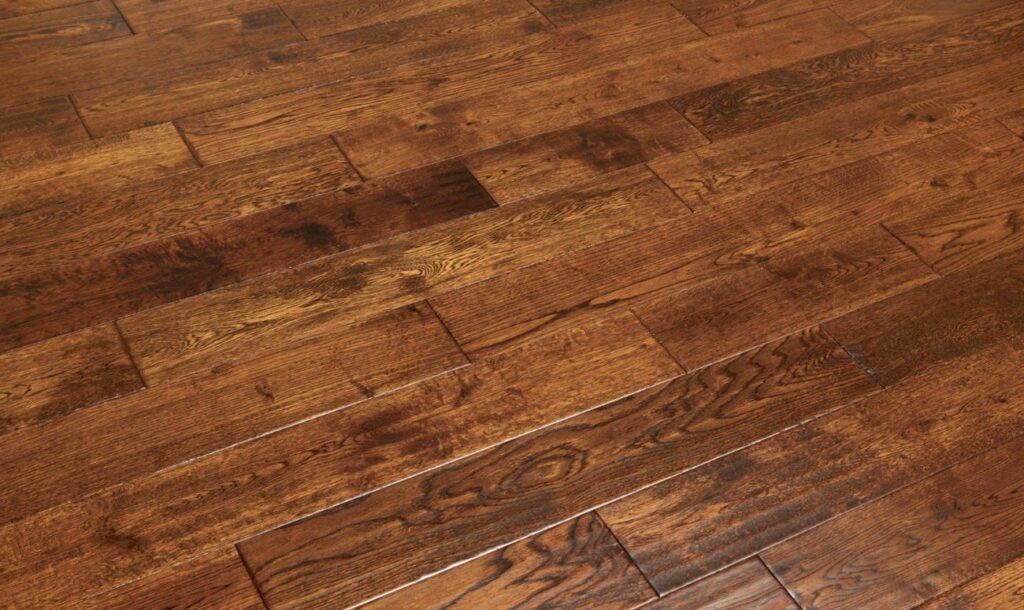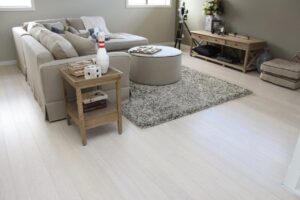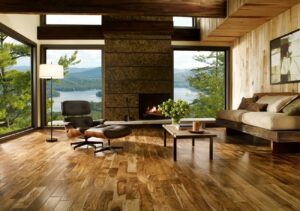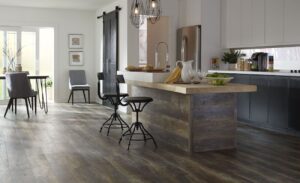Basically, engineered wood flooring is designed with the purpose to minimize the wood expansion and construction. However, there are still gaps exist due to several factors. If you are wondering, now we come to share you the reasons why there are gaps in your engineered wood flooring.
In general, several factors causing the gaps are the materials used by the manufacturers, humidity changes and the installation type and quality. Gapping is normal and it happens to the most of wood flooring installation.
This time, we are going to talk more about the reasons why the gaps are occurring during the installation and other related topics including the tips to solve the gapping issues.
So stay with us for ten minutes and find out the reasons, therefore, you can minimize or even avoid the gaps when you are installing your engineered wood flooring in your home.
Reason 1: Engineered Wood Flooring Expansion Factor
Due to the fact that there are a wide range of engineered wood floorings, the way they are constructed is different one to another. There is a type which is created with the high durability and other type with the less durability.
In general, most engineered wood flooring expands and contracts with the humidity or temperature changes. This way, the floors can swell in a high humidity area and shrink in the low humidity area.
How much the wood expands depend on the wood grain orientation. The wood will tend to move across the grain rather than with the grain, causing the boards wider and narrower more than longer and shorter.
Essentially, engineered wood flooring is designed with the top layer laminating a plywood core. This way, the cross-gaining technique is used to assemble the plywood in a layer.
When a layer expands side to side, the next layer will move front and back, resulting an expansion and contraction which finally create a gap.
Reason 2: Engineered Wood Flooring Humidity Factor
The second reason why there are gaps in your engineered wood flooring is the humidity. Humidity can be the greatest factor causing a gap in the wood flooring installation process.
Though the plywood core constructing the wood flooring makes the engineered wood flooring dimensionally stable, helping reduce the gapping because of the natural expansion, however, the gaps will never be able to be eliminated. You can just reduce and maximize this.
Thus, it is much recommended that you clean the floor and acclimate the flooring before you carry out the installation to ensure that the floor can get rid of the humidity.
One of the best way to avoid humidity in the room is carefully check the floor condition. Make sure you can reduce the humidity level.
This way, you can do it by running the air conditioner to a lower humidity in the summer and run the humidifier to increase the humidity in the winter.
This can cause the remedy production which is not so good for environment. In fact, this is the natural drawback of engineered wood flooring.
Read Also: Anderson Engineered Hardwood Flooring Review
Reason 3: Engineered Wood Flooring Installation Factor
The third reason causing the gaps appearance in engineered wood flooring is the installation factor.
Due to the fact that there are some different installation methods including nail-down, glued-down and floating (which is not nailed down neither glued down), there will be potentially a little change of gaps during the installation.
In the first installation, the engineered wood flooring boards must be fitted tightly. In fact, the gaps exist between the boards. This way, the gaps are sometimes good though they may shrink due to the high temperature or humidity.
The glue-down installation is challenging since the boards are not tightly fitted before you set the adhesive. This is resulting gaps that may be hard to resolve. Although the installer comes back to close the gaps, the adhesive will not get back to its original position.
Badly, it can cause another gaps in the engineered wood flooring. No more reason, glue-down installation is not recommended among the wood installers.
The other installation method is the floating. This is naturally and widely chosen by many DIYers. Floating installation uses the click-together technique which is simply requiring a foam pad underlayment to lay on.
To avoid the gaps, this engineered wood flooring installation method cuts the boards with the right size and tightly click them together during the installation, ensuring that there will be no gap between the boards.
Dealing with the reasons why there are gaps in your engineered wood flooring, all types of installation recommend that the installer acclimate the floors for a few days by laying out the materials in the room where they will be installed.
This will lead the wood flooring adjust the atmosphere of the room humidity and temperature before they are finally installed.
If there is no materials acclimation, there might be great potential chance of wood movement after the boards’ installation. And this is going to result a gap.
Reason 4: Material Flaws Factor
Believe it or not, material flaws can also be a great factor causing gaps during and after the engineered wood flooring installation. Though engineered wood flooring is constructed to help reduce the effect of natural wood flaws, wood is still wood that has already had flaws.
There is no a hundred percent accuracy for the manufacturers to produce boards without flaws, right?
As a result, some boards will never be able to perfectly fit one to another.
If you see there is potentially a gap between the two boards, you can always try to find another board that will fit better. If you are just forcing the unfitted board, well, you are just letting the gaps appear on the floors.
The only one solution over this problem is that you must replace the boards with the other boards or fill the gaps with the wood-filler that has the most color-match.
Finally it would so effortful when the gaps occur during and after the engineered wood flooring installation. Hence, take your little bit effort how to avoid the gaps.
Avoiding is much better than resolving, right?
The Best Tips on How to Prevent The Gaps in Engineered Hardwood Floors
Now that you have known the reasons why there are gaps in your engineered wood flooring, we are going to share you the summary of the best tips on how to prevent the gaps in wood floors.
Well, you may be able to avoid the gaps during the installation process. However, human mistake is unavoidable, resulting some gaps still occurring on the engineered wood flooring after the installation. Noticeably, it would be hard to resolve the problem except you use the wood filler.
Now you can imagine when the wood filler cannot help, what things you had better do?
There are some best tips to prevent the gaps occur in your engineered wood flooring.
Keep The Home’s Humidity or Temperature
The first common way is to keep your home relative humidity or temperature close to 50%. In the summer, the humidity may get dropped. You may use the humidifier to keep your home in a stable temperature.
On the other hand, your home will experience the high humidity in the winter. So you can dehumidify.
Acclimate The Room Before The Wood Installation
Like it has been suggested, always acclimate the room where you want to install the wood flooring. This way the engineered wood flooring will introduce to the room moisture.
The acclimation periods will also include the way you make the floors clean and dry completely so that the floors are ready to be installed by the engineered wood flooring. This way, you can take at least two weeks for the acclimation.
Put A Coat Of Finish
In most cases, when all the tips are done yet the gaps are still occurring, you have an option to coat the finish on your new floors as soon as possible.
This is due to the fact that coating the finish on new floors will slow down the moisture movement in and out of the wood or board flooring.
In the other word, once you finished the engineered wood flooring installation, you coat the finish as soon as possible. This will prevent the floors from creating gaps. This, there will only be a little chance of gapping among the boards or planks.
Considering the three best tips on how to prevent the gaps in engineered wood floors, now you must take the coating into the list of wood flooring installation.
From the tools and materials preparation, steps on installing the engineered flooring to the coating as the finishing step.
That’s why it is best described that the proper installation of a wood flooring will lead to the high durability of the floors.
Read Also: Solid and Engineered Wood Flooring to Transform Your Home Into The Most Beautiful Space
Final Words
All in all, the reasons why there are gaps in your engineered wood flooring must be truly recognized so that you can take an action before so many gaps are there on your wood flooring.
So please pay attention to the factors causing the gaps and how to overcome the gapping issues.





